AN ANNIVERSARY RETROSPECTIVE! Dig this peek inside a Gotham you only think you know…
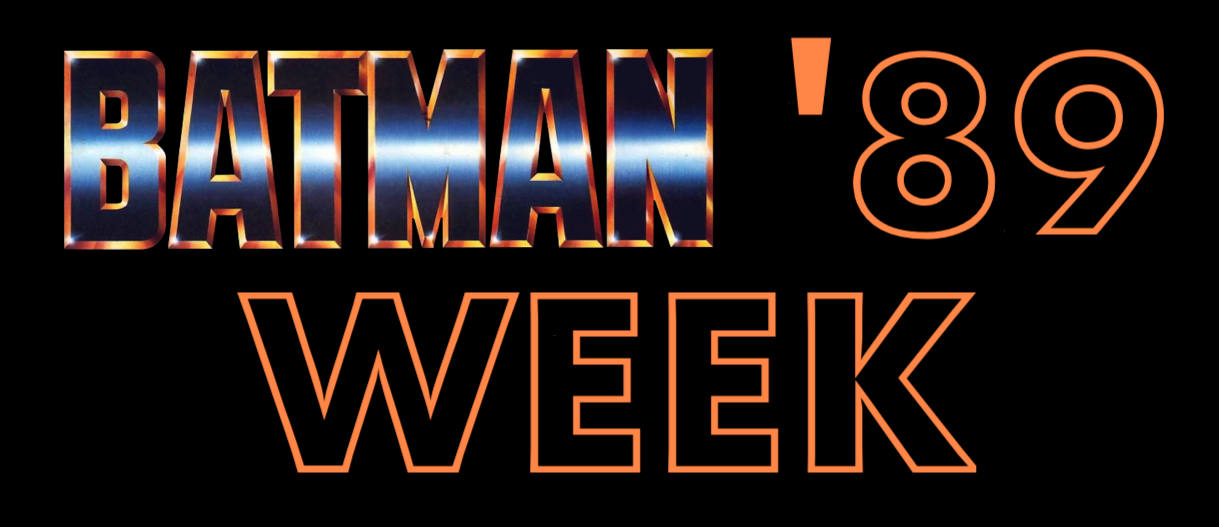
—
UPDATED 6/23/23: Batman ’89 was released 34 years ago — and Michael Keaton is back as the Dark Knight in The Flash! Perfect time to re-present this piece from 2019’s BATMAN ’89 WEEK. Dig it. — Dan
—
It’s BATMAN ’89 WEEK! Tim Burton’s groundbreaking Batman was released June 23, 1989. All this week, we’re publishing a series of retrospectives and celebrations spotlighting various aspects of a movie that was less a film and more a pop-culture phenomenon. Click here for the complete index of features.
—
For this kickoff piece to BATMAN ’89 WEEK — the movie debuted 30 years ago today — we’ve invited Mark S. Reinhart, the author of The Batman Filmography, to tell you 13 THINGS YOU MIGHT NOT KNOW ABOUT BATMAN ’89:
—
By MARK S. REINHART
1. Batman ’89 is the Reason the Character is Now Viewed as a Serious Action Hero. It is hard to explain to anyone who was born after 1989 just what it was like to be a serious Batman fan in the years between the cancellation of the Batman TV show and the release of the ’89 film. But understanding the general public’s perception of Batman during those years illuminates just how important the motion picture turned out to be in the history of the character. So listen up, all of you Batman fans in your 20s—this is what Batman fandom was like during the 1970s and 1980s:
During those years, it was almost impossible even to tell someone you were a serious Batman fan — unless that person was a hardcore comic book fan, that is. To everyone else, the words “serious” and “Batman” could not really even be placed next to each other in the same sentence. Batman was nothing more than Adam West in the campy TV show and movie, a silly character for kids, a craze that had died out a long time ago. Most people simply had no idea that Batman had originated in the comics as a dark avenger, as a man with a haunted past relentlessly fighting for justice.
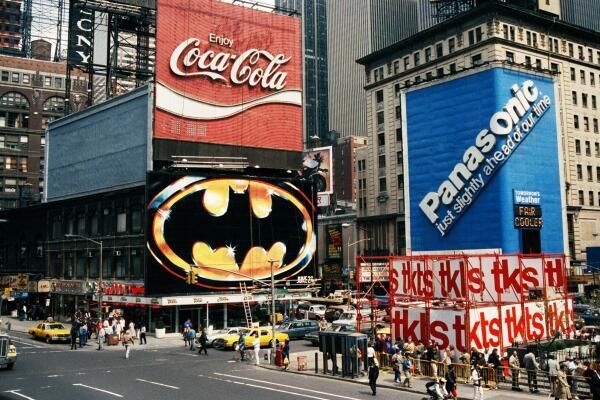
Batman in Times Square? This was a big deal in 1989.
Batman’s return to his dark roots was well under way with works like Frank Miller’s Batman: The Dark Knight Returns, first published in 1986—and of course, there had been dozens of classic serious Batman comic stories published during the 1970s and 1980s. But very few people other than comic book fans were aware of these works.
The phenomenal success of Batman in the summer of 1989 changed all that, introducing millions of people around the world to “our” Batman – marking the first time such a massive audience appreciated the character in the way Bob Kane and Bill Finger had intended him to be viewed when they created him in 1939.
—
2. No Michael Uslan, No Movie. One man in particular was responsible for bringing about this incredible shift in the way the general public perceived Batman, and his life story seemed to indicate that he had literally been born to do this job. Michael Uslan had become an avid comic book fan in the late 1950s when he was a young boy growing up in New Jersey, and he ended up being particularly drawn to Batman. He was a teenager when the Batman TV show premiered in 1966, and while he was thrilled to see his hero featured in a (relatively) big-budget television show, he was bitterly disappointed that the show played the Caped Crusader for laughs.
By the time Uslan was a law student at Indiana University in the early 1970s, he was actively working to get people to appreciate comic books as a serious art form. He developed a fully accredited college class on the history of comic books for the university’s “experimental curriculum” program. Shortly after Uslan began teaching his class, it received an avalanche of attention from major news media outlets—at the time, the idea of a major university recognizing comic books as a legitimate academic subject was so novel that it warranted nationwide headlines.
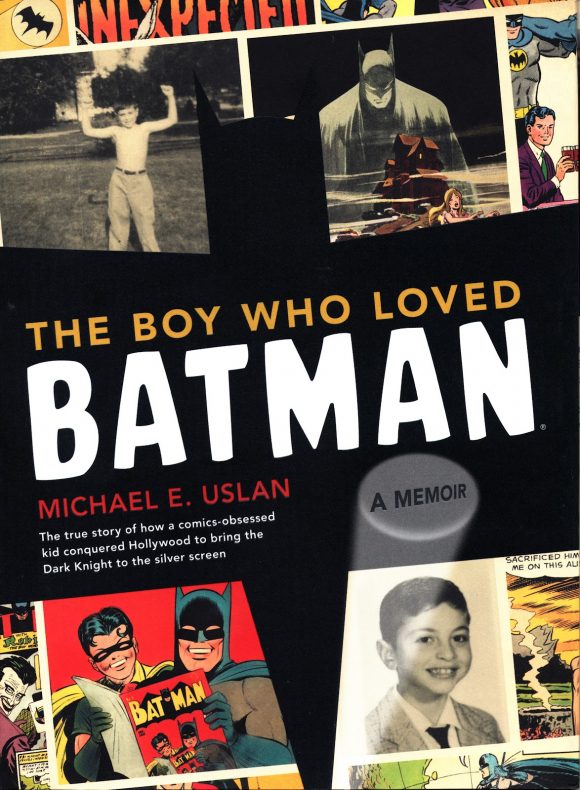
This attention led to both Marvel Comics and DC Comics contacting Uslan—both companies wanted to establish a relationship with this young man who was championing their work. DC ended up offering Uslan a job, which he happily accepted. His tenure at DC was a dream come true for him—he even got the chance to co-write several Batman stories for Detective Comics in 1976.
But Uslan’s Batman dreams were far from over. In 1979, after working for United Artists’ legal department for awhile, he decided to take on the task of producing a new live-action Batman big screen work. The revitalization of the character in 1970s comic stories and the blockbuster success of the 1978 Warner Brothers motion picture Superman led Uslan to feel that the time was right to embark on such a project. He envisioned this Batman film as being far more serious in tone than the 1960s TV show—it would be inspired by the work of great Batman creators such as Bob Kane, Bill Finger, Denny O’Neil, Neal Adams, Steve Englehart and Marshall Rogers.
But it would end up taking Uslan a decade of hard work to realize his goal of making such a film. He encountered a whirlwind of rejections coming from different studios, producers and directors during his 10-year quest, but he held firm in his belief that he would be able to make the world see Batman in the same way that all of us serious fans did. Uslan’s vision and tenacity is the sole reason the ’89 Batman exists—and because of that fact, he deserves a place in Batman history that is on the same level as all of the great Batman creators I just mentioned.
—
3. Englehart and Rogers’ Detective Comics Run Formed the Basis of the Film. In the early 1980s, Uslan’s Batman team hired Tom Mankiewicz, creative consultant for Superman (1978) and Superman II (1980), to write a Batman screenplay. Titled The Batman, Mankiewicz’s script was loosely based on the Batman comic stories by Steve Englehart and Marshall Rogers that were originally published in Detective Comics in 1977-78. The script featured the Englehart characters Silver St. Cloud and Rupert Thorne, as well as familiar characters such as Robin, the Joker and the Penguin. The screenplay resembled the 1978 Superman in that it was epic in tone, and chronologically followed Bruce Wayne’s life from the time of his parents’ murder through his metamorphosis into a master costumed crimefighter.
Even at this early stage of planning the film, Jack Nicholson’s name was mentioned as the major candidate for the role of the Joker. Uslan in particular thought that Nicholson’s volatile style of acting made him perfect for the part. But it would be a long time before Uslan’s Batman movie project would be developed to the point where it actually needed actors. No one was impressed enough with Mankiewicz’s script to begin work on committing it to film, so the project languished in pre-production limbo for several years.
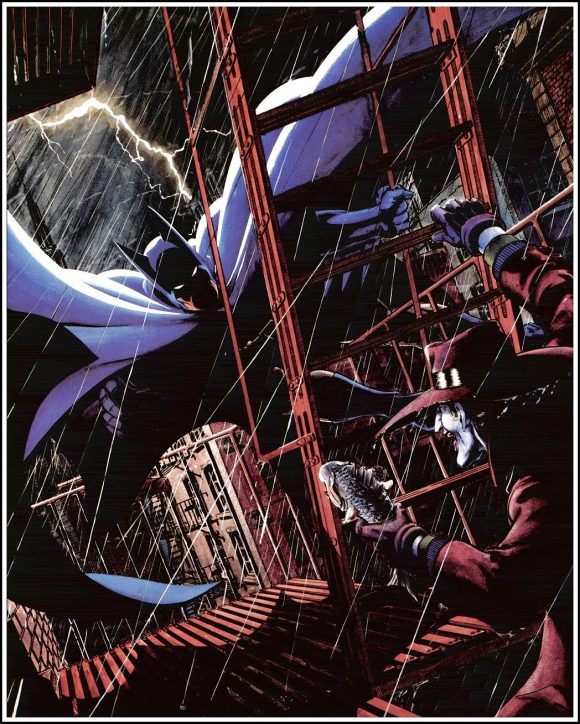
Rogers’ classic print
—
4. Casting Michael Keaton Wasn’t the Only Casting Controversy. Warner Bros. eventually hired Tim Burton to direct and the film finally got off the ground. Burton in turn chose Michael Keaton to play Batman. Keaton had played the grotesque, obnoxious ghost Betelgeuse in Burton’s 1988 film Beetlejuice, and the manic energy of that performance led Warner Bros. and Burton to think that he might be able to bring the same kind of intensity to the Dark Knight.
Of course, it is very well documented how serious Batman fans felt about that casting decision when it was first announced. Warner was inundated with letters written by fans arguing that a 5-foot-10 comic actor with a medium to slight build was simply not right for the role.
But amusingly, the hiring of Keaton was not the only casting controversy that Warner faced at this time. Adam West publicly complained that he was not considered for the role of Batman in the new film—consequently, some fans of the 1960s Batman communicated their dismay to the studio because they felt West was being slighted. Of course, West’s history of playing Batman was completely counter to the kind of Batman that this new film was hoping to depict, so Warner dismissed the complaints of both the actor and his supporters with barely a second thought.
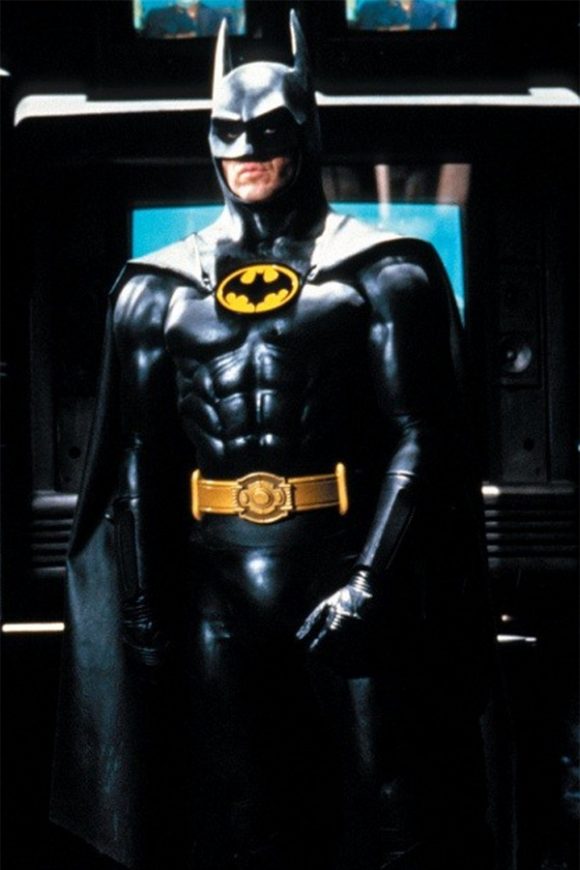
—
5. Sean Young Was the First Choice to Play Vicki Vale. Warner’s casting of Vicki Vale also proved problematic. Sean Young was hired to play the part, but she broke her arm while horseback riding right before the film was due to start shooting—so she was replaced by Kim Basinger. (To add insult to injury, the only reason Young was riding a horse in the first place was to rehearse for a Batman scene that required her to be on horseback—and the scene was eventually cut from the script. So she broke her arm and lost the part all for nothing!)
Young went on to campaign very hard for the Catwoman part in 1992’s Batman Returns — even dressing in a Catwoman-like costume and going to the Warner lot in an attempt to meet with Burton. She brought her own video crew with her to film this “storming the gates” audition—however, the whole plan backfired when Burton was unavailable (or perhaps simply unwilling) to give her an audience.
She ended up prowling the lot in her costume, making everyone she encountered there, including Michael Keaton, rather uncomfortable. Obviously, Young didn’t get the part and Michelle Pfeiffer did—but Young did appear on The Joan Rivers Show to share the story.
—
6. Bob Kane Claimed that Vicki Vale Was Based on Marilyn Monroe. Speaking of Vicki Vale, the character was originally created in the late 1940s, but not for Batman comics stories—rather, she was created by the writers of the 1949 movie serial Batman and Robin. (Vicki was basically a retread of Superman’s girlfriend Lois Lane.)
Bob Kane stated in his autobiography Batman and Me that he first learned about the character when he visited the Columbia Studios lot in 1948, as Batman and Robin was going into production, so he decided to introduce her into the comics. Kane also stated in Batman and Me that the comic book Vicki’s appearance was based on Marilyn Monroe. Kane claimed to have met the actress and spent some time with her both in 1943, when he visited Hollywood during the production of the first Batman serial, and in 1948, during his Batman and Robin visit.
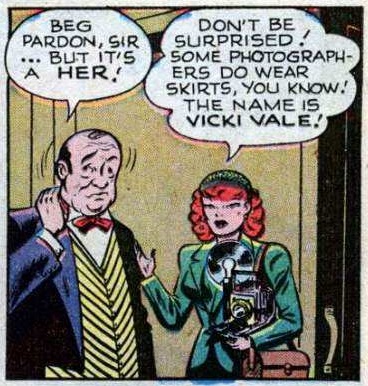
Batman #49, by Bill Finger, Bob Kane and Lew Sayre Schwartz. (Inks by Charles Paris.)
It is worth pointing out, however, that Kane’s autobiography is filled with many colorful anecdotes that seem quite far removed from actual truth—so his claim to have rubbed elbows with Marilyn Monroe should probably not be taken too seriously – especially since the timeline of her career doesn’t really line up with this version of events.
Incidentally, Batman and Robin’s Vicki Vale looked nothing at all like Monroe—the part was played by a dark-haired actress named Jane Adams.
—
7. Batman’s First Preview Featured an Iconic Shot That’s Not in the Movie. Warners’ nervousness over the Keaton casting led the studio to release a rough trailer the winter before the movie came out so that the public could see that this was indeed going to be a serious Batman film. And this preview truly captured the film as a work in progress—it contained no musical score, so it came off more like a rough cut to be shown to studio execs rather than a preview for general audiences.
The trailer closed with an iconic close-up shot of Batman, his cowl covered in deep shadow, white steam billowing behind him. I’m guessing that this shot came from the film’s scenes at Axis Chemicals—but intriguingly, it ended up never appearing in the film itself. At the time, a still photo of the shot was used for publicity purposes—but I’ve always wished that the shot would have been actually used in the movie.
—
8. A Batman Scene Was Cut at the Last Minute. The original cut of the movie featured a scene showing Batman moving a little girl out of harm’s way while fighting the Joker’s goons, and the little girl asking him, “Is it Halloween?” This scene must have been cut from the film at the last possible moment—photos of it were even included in the first Batman trading card set that was released at the time of the film’s premiere. Even though the scene ended up out of the movie, it can still be viewed by anyone who is interested in getting a look at it, because it is included in the documentary Shadows of the Bat: The Cinematic Saga of the Dark Knight, which can be found on deluxe editions of the Batman DVD and Blu-ray releases.
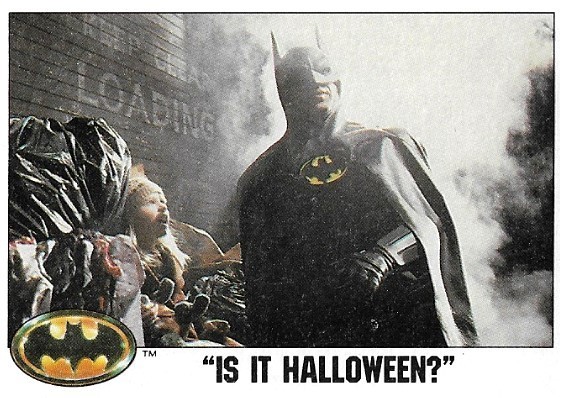
—
9. Jack Nicholson Wasn’t Wearing White Makeup During His First Joker Scene. Early in the film, Jack Napier is horribly injured during the gun battle at Axis Chemicals and makes his way to a seedy Gotham surgeon to repair his face. The surgeon can only do so much and when Napier sees his disfigurement, his mind becomes completely unhinged. He laughs maniacally as he makes his way out of the surgeon’s office.
But as Jack walks up the steps and out the door of the office, you can see his face illuminated by a ceiling light—and it’s not chalk white. The filmmakers obviously thought that Nicholson’s face would not be well-lit enough for audiences to see, so the actor was not asked to wear his full makeup.
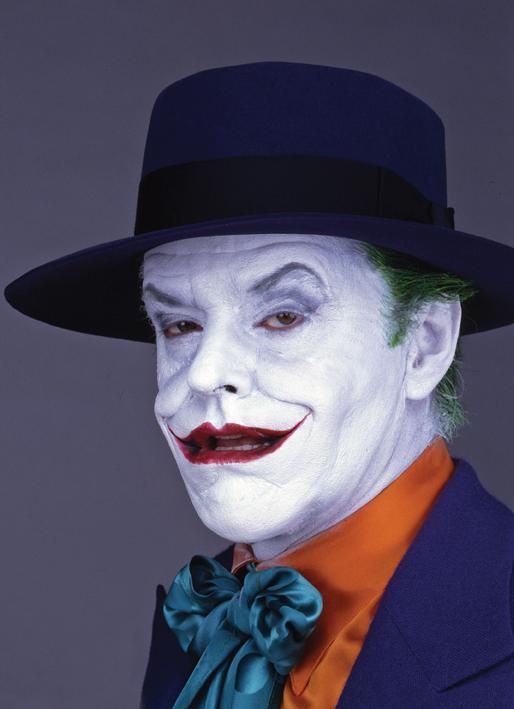
In full makeup, natch
—
10. Danny Elfman’s Theme is Remarkably Similar to the Opening Music for the 1943 Serial. Danny Elfman’s marvelous musical score was essential in establishing Batman’s overall atmosphere. His dark, sweeping orchestral compositions are a perfect complement to the film’s images of Batman’s mysterious figure and Gotham City’s foreboding architecture. You only need to hear the distinctive first few notes of Elfman’s theme at the opening of the film to know how far removed this movie is from the lighthearted world of the 1960s Batman.
But as a musician, I can’t resist pointing out that those first notes are suspiciously similar to Lee Zahler’s opening orchestral music of the 1943 serial Batman.
The music in the 1943 opening starts with the notes “D-E-F-B.” Elfman’s theme is in a different key but it opens with notes that are almost the exact same intervals— “C-D-D#-G#.” In fact, if you moved the G# note in Elfman’s piece up a half step to an A, they would be exactly the same! This is either a remarkable coincidence, or Mr. Elfman is guilty of a tiny bit of very clever musical thievery.
—
11. Kim Basinger Kept Losing Her Shoes So She Wouldn’t Be Taller Than Keaton. To put it bluntly, many of the criticisms that Batman fans leveled at Michael Keaton when he was first given the part were right on target. At 5-foot-10 and of slightish build, he’s simply too small to be completely convincing. Because of Keaton’s limited physical stature, many of his scenes are underwhelming.
In fact, Kim Basinger (5-foot-7) had to take off her heeled shoes in the film no less than three times so that she wouldn’t appear taller than our hero.
The first time the shoes go are when Bruce is going to kiss her during their date at Wayne Manor. Next, she throws them out of the Batmobile when she and Batman are preparing to run through the streets of Gotham to avoid the Joker’s goons. Finally, they fall off her feet when she is ascending the Gotham Cathedral staircase with the Joker. These “Vicki loses her shoes” scenes in Batman add nothing in terms of plot, character development, etc.—they are there simply because Keaton is too short for his role.
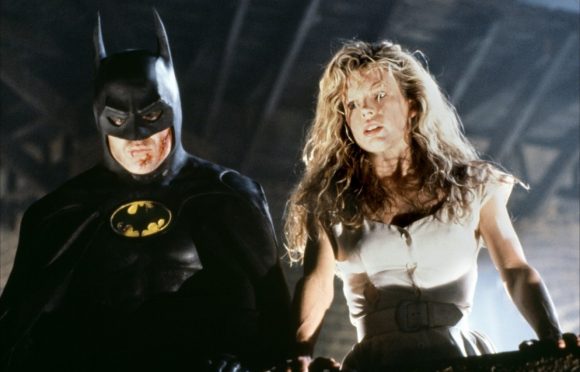
—
12. One of the Film’s Climactic Lines Makes No Sense – Because of Last-Minute Changes. Batman’s plot suffers a fairly major breakdown at the end of the film when Batman confronts the Joker atop Gotham Cathedral. In the scene, Batman says to the Joker “you killed my parents,” and the Joker responds by saying “I was a kid when I killed your parents.” But in the film, Batman has never revealed he is actually Bruce Wayne to the Joker—so the Joker has no way of knowing who Batman’s parents were, or when he would have killed them. (After all, the film has led us to believe that Jack/Joker has killed scores of people over the years.) Consequently, this line at the climactic moment of the film makes no sense whatsoever.
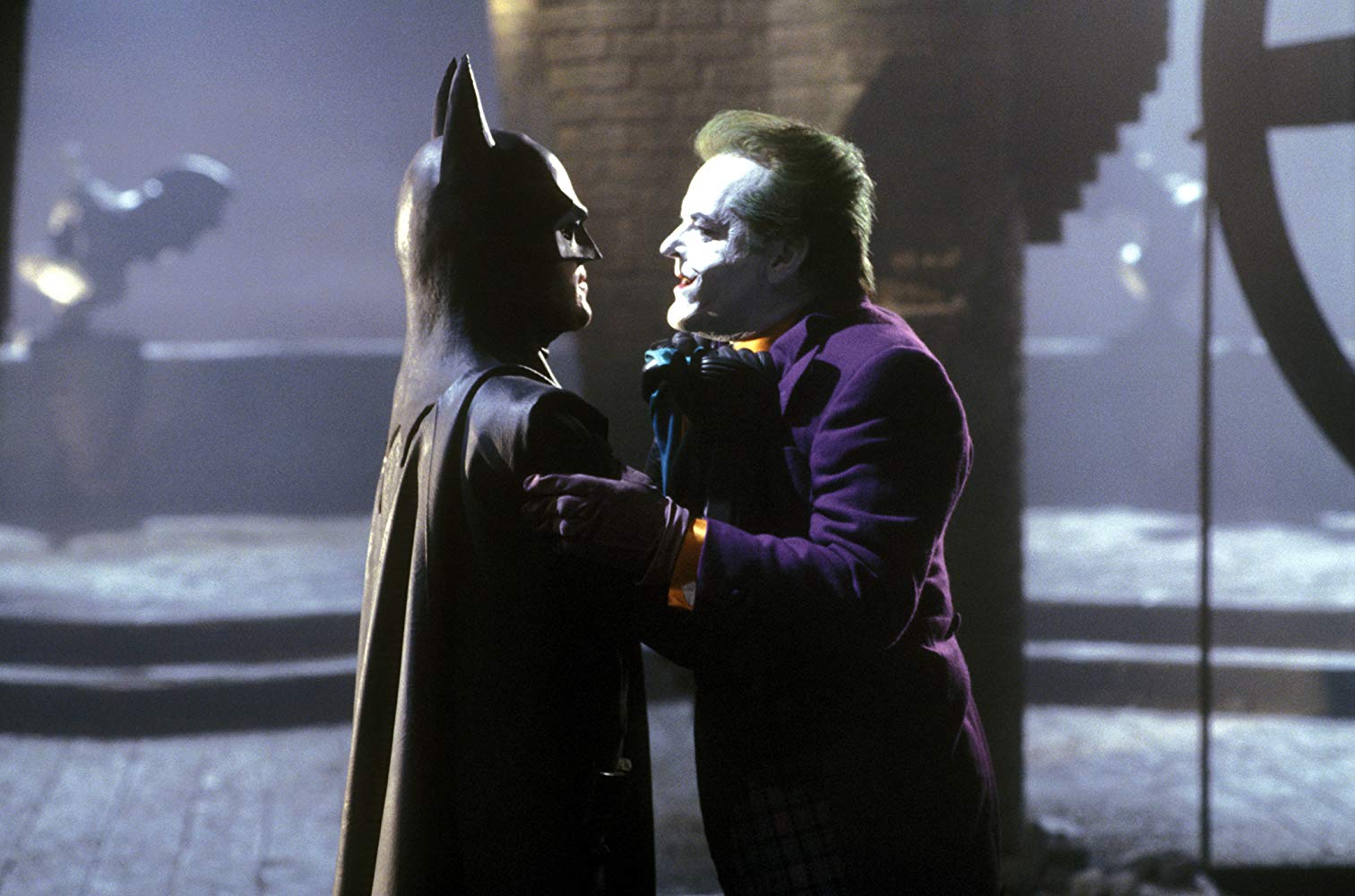
This narrative mistake happened because in the early versions of Batman’s script, the Joker was supposed to discover that Batman was Bruce Wayne during the final scenes of the film. However, this element of the story was dropped by the time filming began. Somehow, the Joker’s line about being a kid when he killed Batman’s parents made it all the way into the final cut of the film, even when it no longer matched up with the film’s story.
I know that it has been 30 years since Batman was first released, but I would still like to see this mistake somehow corrected!
—
13. Robin Was Supposed to Appear in the Movie. Sam Hamm’s initial script drafts featured Robin/Dick Grayson but the Boy Wonder was eventually winnowed out. Still, Robin was able to make his way onto deluxe editions of the Batman DVD and Blu-ray releases. Those editions included a short program called Batman: The Complete Robin Storyboard Sequence, which visualized Robin’s part in one of Hamm’s early versions of the screenplay. (Click here for more on that, from co-screenwriter Sam Hamm himself.)
—
MORE
— The Complete BATMAN ’89 WEEK Index. Click here.
— 13 THINGS to Love About MICHAEL KEATON’s BATMAN — RANKED. Click here.

June 23, 2019
Wow! Great background! I must confess I’m not a Jack Nicholson fan. He’s okay. As a Batman fan, I like the Batman films. I like the Keaton films more than the “cos-players” that followed him. They all tend too try to hard to be serious and adult. It would be nice to be able to have an all-ages Batman film. Maybe that’s why I have a special place in my heart for Adam West. His Batman makes me feel like a little kid.
June 23, 2019
This is a wealth of information about the film that I appreciate very much.
June 24, 2019
Anyone interested in the full story of Uslan’s development of the film should read his book “The Boy Who Loved Batman”. In depth information on all Batman films though 2011 can be found in what in my opinion is the best Batman book around – “Million Dollar Batman” by Bruce Scivally. No Bat Library should be without it.
July 6, 2019
“Consequently, this line at the climactic moment of the film makes no sense whatsoever.”
Unless Jack had killed scores of husbands and wives together over the years, the line does make sense. Presumably the murder of the Waynes was as memorable for him as it was for Bruce.
July 28, 2019
Actually, I’m going to stick by my argument that this line doesn’t make sense. If the Joker really had connected the dots that Batman was talking about the Waynes as you are surmising here, then the Joker would have certainly had SOME sort of reaction that Batman and Bruce were one and the same. But there is NO reaction whatsoever from the Joker that would lead the audience to believe that he has figured out Batman’s true identity. Furthermore, there is no reaction from the Joker that would lead the audience to believe that he now knows that he played a major role in actually creating Batman. This is confusing and incomplete storytelling, pure and simple.
You don’t have to just take my word on this point. BATMAN screenwriter Sam Hamm just did an interview that Dan has featured on this website. In the interview, Hamm lamented the fact that too many writers were working on BATMAN, which led to the film losing its narrative focus. Here are Hamm’s exact words about this problem — “The script was reworked by Diverse Hands, and it shows. In the finished film there are a lot of setups without punchlines, and punchlines without setups. Most of the problems derive from the decision to pin the murder of Bruce’s parents on the Joker—it changes the whole emotional dynamic between Bruce and Vicki.”
October 28, 2020
I agree with reveltator60 since I was going to say the same thing. Forget a minute that you KNOW what the script was before the change. We’re talking about the Joker. I, personally, find it extremely funny that he says “I was young when I killed your parents” since he doesn’t even try to defend himself because he know it’s probably true. The “I was young” makes me think of Priscilla Presley in Naked Gun when she says “I was young! I needed the work!” Remember that in the same scene, he’s asking Batman to not punch him because he wears glasses…
Also, the way the movie is made, and I’m not talking about what you can read in the script or hear in interviews, I’m talking about how we receive the movie, we cannot be 100% sure that Jack Napier did kill Bruce’s parents. It looks a lot like Bruce convinces himself that it’s the case.
September 8, 2021
In the 1990 FLASH television series, which is quite openly modeled on this BATMAN movie, a similar exchange in its Pilot has the Flash inform the villain “You created me when you killed my brother!” — and there, the bad guy does retort “I’ve killed a lot of people’s brothers, which one was yours?!” (Later in the Series he has figured out, perhaps just through process of elimination.)
September 8, 2021
That’s a very good example to bring up here, Ross! I would imagine that you and I would agree about that line in THE FLASH being a winking reference to the final showdown between Batman and Joker in the 1989 BATMAN.
September 5, 2021
Everyone blames the 60s Batman TV show for the character’s reputation but it’s not true. What is true is that the TV show was much more popular than the comic magazine. But Batman throughout the 50s and early 60s was not to be taken seriously. Camp, science fiction,Bathound, Bat-mite etc. The series was an amplification of Batman has he had appeared for a decade and a half. It wasn’t created out of thin air.
September 7, 2021
Randall, I very much agree with you that the camp Batman of the TV show was an amplification of how the character was portrayed in the comics during the 1950s and 1960s. But the vast majority of people saw who Batman as a washed-up camp craze during the 1970s and 1980s had never been exposed to the character through comics – they only knew him from the TV show. For every single Batman comic fan that existed during that time, there had to be at least 10,000 people who only knew the character from TV. So yes, the camp Batman was a product of both the comics and the TV show – but no one other than a very small number of Batman comic fans knew that fact!
September 5, 2021
I call BS on number 11. Actors of different heights (male and female) are in films together all the time, and their height is modified as necessary with the use of off-frame boxes to make one actor taller than the other without resorting to in-story explanations of taking off their shoes. Basinger did take off her shoes a lot in the film, but I seriously doubt it’s for the reasons that the author stated.
September 7, 2021
Daniel, I agree with your point about the height of actors being modified in TV and movie scenes by using off-frame boxes. However, I made this point about some of the scenes in BATMAN because they were were medium or long shots that showed Basinger running or walking next to either Keaton or Nicholson. They were scenes that could not be height-modified by using off-frame boxes. So that leads me to suspect that the decision was made to have in-story explanations as to why Vicki ended up shoeless several times in the film.
September 5, 2021
You forgot the inexplicable walking of Vick Vale into the Batcave by Alfred, with no explanation. Burton, as has been the case in some of his other movies, tends to focus on moments instead of a complete narrative structure. It often leads to mistakes like that for his movies.
September 6, 2021
Vicki walking into the batcave was scripted by Warren Skaarren, who took credit for the idea. To be honest, I’ve never been terribly bothered by it. Vale evidently put two and two together when she learned Bruce Wayne’s past and she showed up and told Alfred, who figured there was no point in stonewalling. Alfred earlier in the film expressed hope that Bruce would stop being Batman, and he likely hoped Vicki would be “the one.” There could have been greater dramatic preparation for the scene, but the production history of the film was chaotic. In Sam Hamm’s earlier draft Vicki also learned Batman’s secret identity, along with practically every major character in the film.
September 7, 2021
Question: in that Batman #49 panel above, is that Alfred next to Vicki? If so, that’s the original plump Alfred prior to his weight loss into the classic “skinny Alfred.” But that change happened years before Batman #49. Any insight?
September 7, 2021
James, that is not Alfred in that frame – it is an unnamed butler at the Gotham City Yacht Club. So yes, you are right, Alfred’s original plump appearance had been changed by the time BATMAN #49 was published. That being said, the unnamed Yacht Club butler does look a lot the original Alfred, doesn’t he?
September 8, 2021
Thank you so much! That question would have kept nagging the back of my mind without an answer! Kane’s swipe file must have had a limited number of butlers, LOL!
April 16, 2022
Hi Mark. I was initially one of the movie naysayers…UNTIL I saw the movie. As far as Mr. Keaton’s height, I believe if that had been a problem, the “powers-that-be” could have done what I did years before the movie ( I’m Mr. Keaton’s height), when I did 66 Batman, put lifts in Mr. Keaton’s shoes (Fans DO know that the “Bat Boots” were made from Mr. Keaton’s Nike shoes, don’t they?). Thanks again for a great blog! Cheers!
June 24, 2024
Thanks for the storyboard sequence! Loved it!